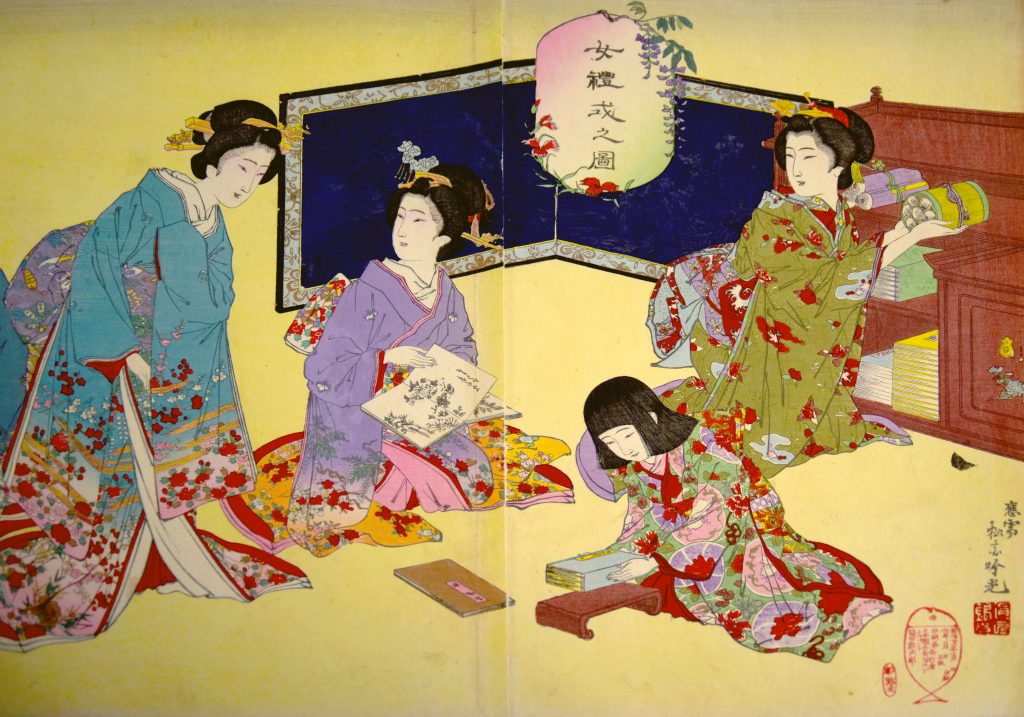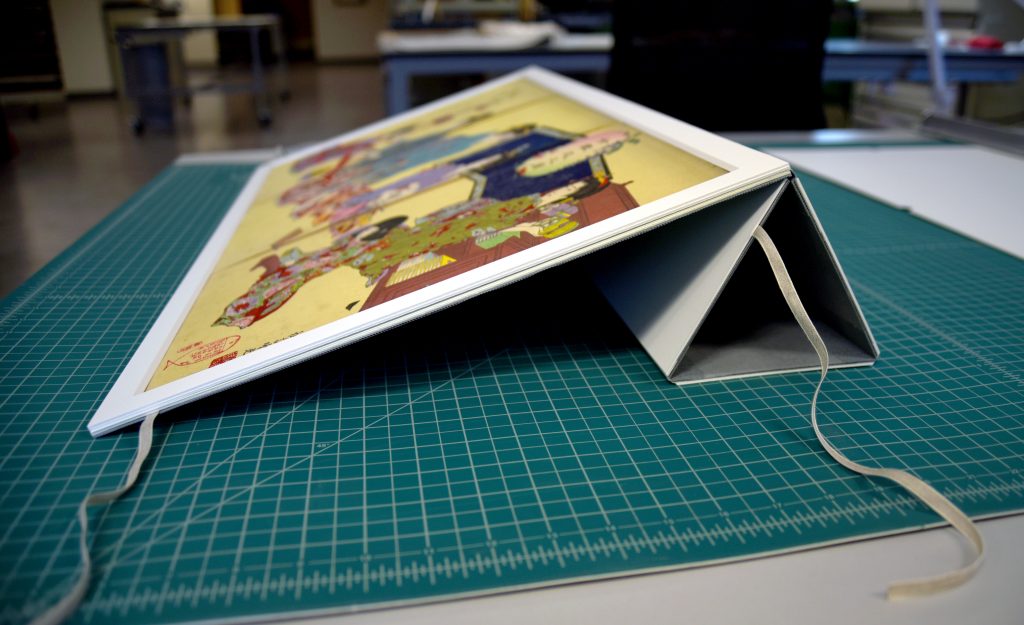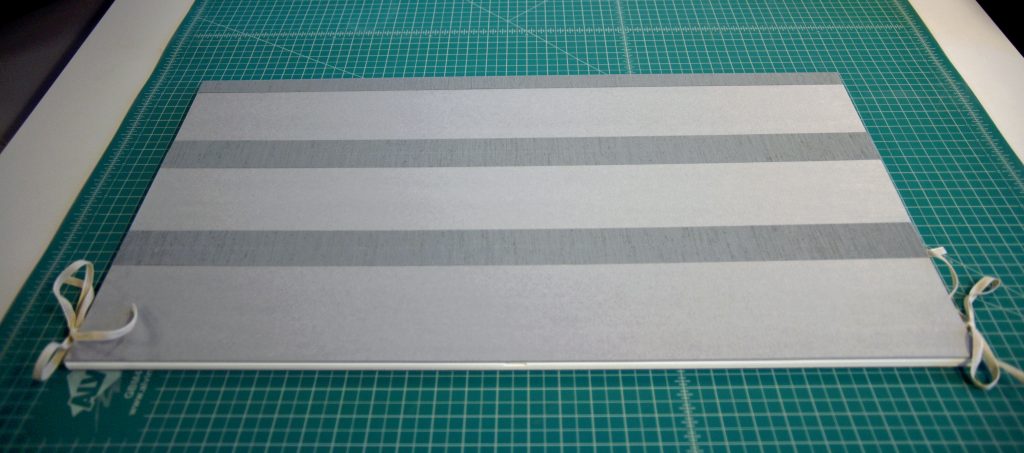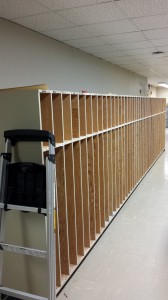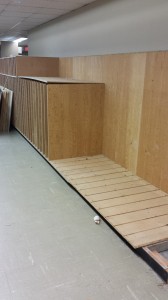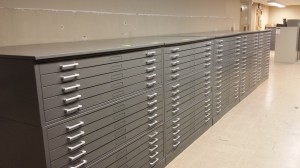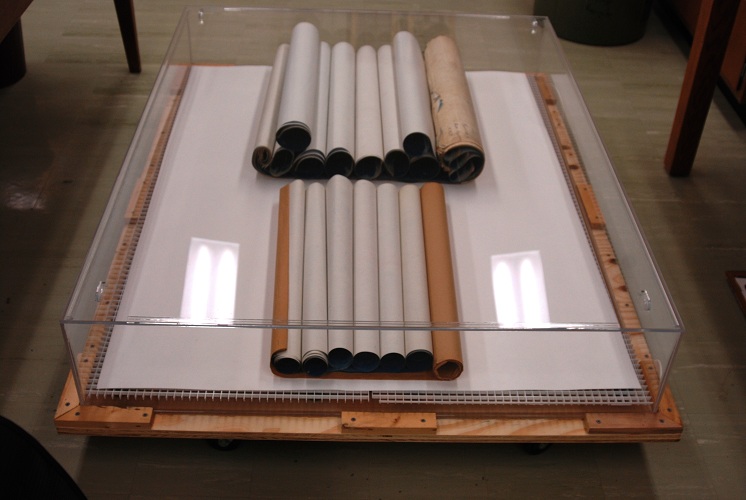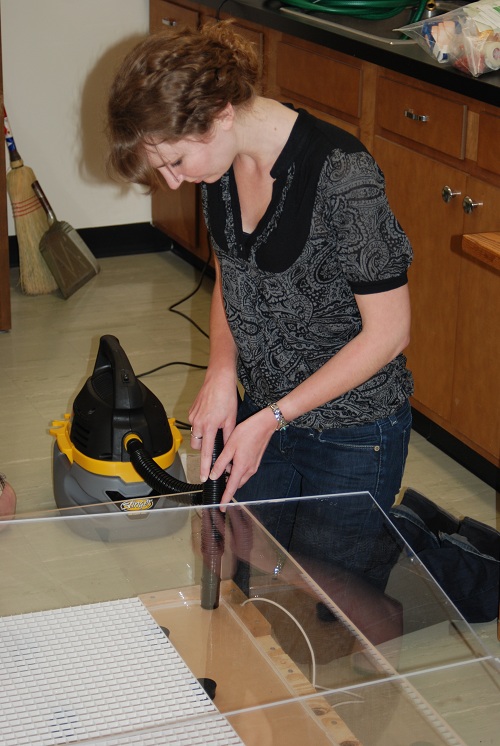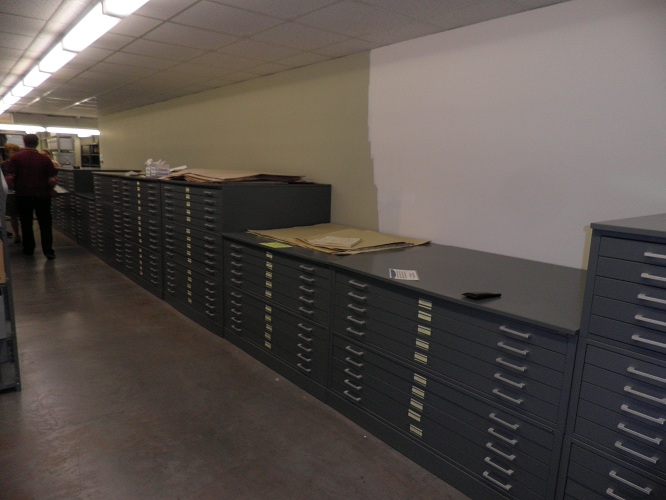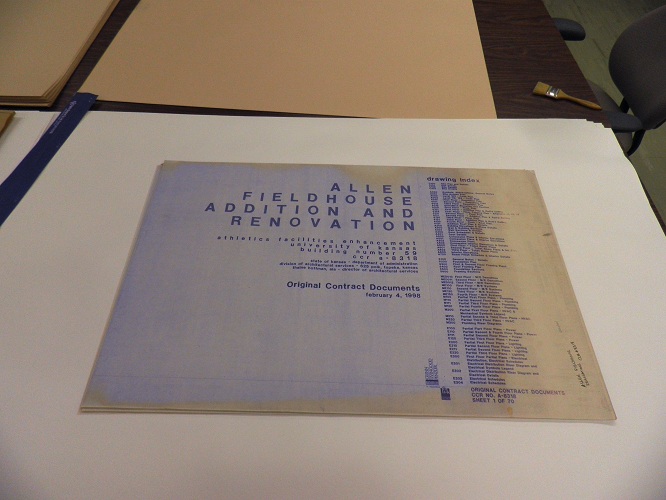One of the most interesting items in our collection, from my point of view, is the full-length portrait of Shirley Tholen, KU’s Jubilee Queen. Spencer Research Library doesn’t actively collect oil paintings, so the fact that we have this painting is unusual in itself. Its size and its history make it even more so. We’ve been spending a lot of time with this portrait lately, and it’s a great example of how collections, experts, and supporters come together in the work of Spencer Library.
The portrait depicts Shirley Tholen, whose naming as Queen was part of the celebration of KU’s 75th anniversary, in 1940-1941. Painted by Raymond Eastwood, a KU professor of drawing and painting from 1922 to 1968, the portrait depicts Ms. Tholen in a dress inspired from the mid-1800s. The jubilee celebrations referenced the early history of the university, with touches like the installation of hitching posts on campus, a song contest, and many reunions.
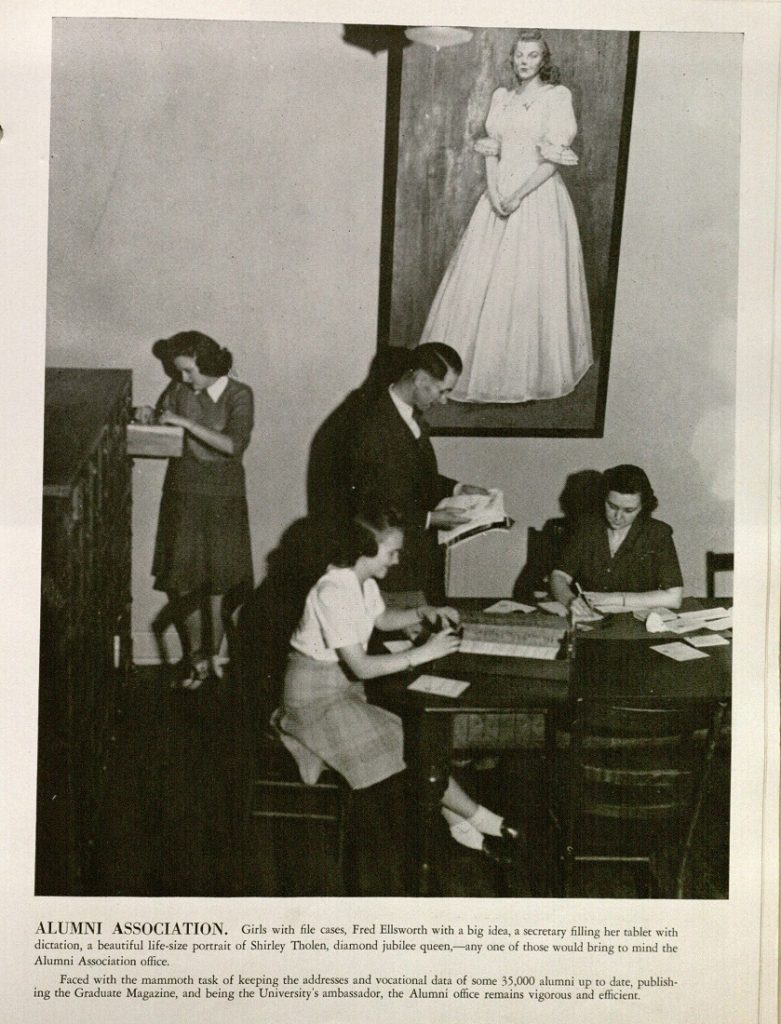
The Shirley Tholen portrait in the KU Alumni Association office,
as shown in the June 1945 Jayhawker. University Archives.
Call Number: LD 2697 .J3 1945. Click image to enlarge.
For years, the portrait appears to have hung in the office of the KU Alumni Association, as shown in the above photograph from the 1945 Jayhawker yearbook. It eventually made its way to University Archives, where it was stored in the fourth floor stacks of Spencer, surrounded by boxes of university records. Its size made it difficult to find appropriate storage, and it was obvious, even to those of us more accustomed to working with paper and photographs than canvas, that the painting and its supporting structure were in need of repair.
In 2015, Ms. Tholen’s son Tom Jasper and his wife Alexis planned to visit Kansas and inquired about the painting. To make it possible to view it, our Conservation Services staff hung the portrait in our North Gallery and created a temporary label. During their visit, the Jaspers gave us a copy of Ms. Tholen’s memoirs, which we added to our collections. The Jaspers also offered to help financially support the work needed to restore the painting. Conservation Services staff attempted to locate a professional paintings conservator who could work onsite, since the painting is too large to easily ship or move. In late 2016, we welcomed Kenneth Bé of the Gerald R. Ford Conservation Center to Lawrence.
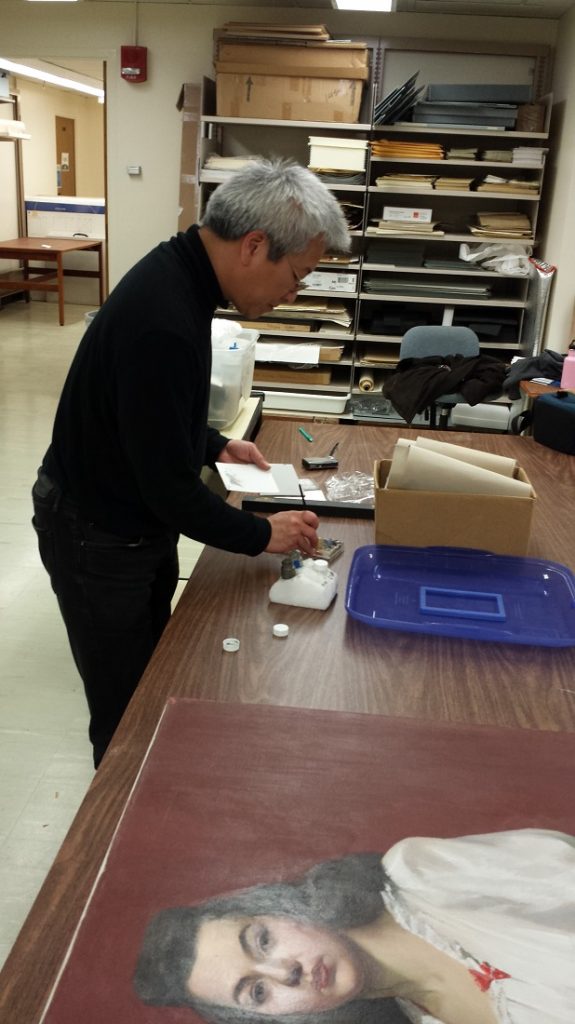

Kenneth Bé working on the portrait. Click images to enlarge.
Mr. Bé began with a thorough examination of the painting, photographing it in its existing frame and the wooden stretcher to which the canvas was attached. He then removed the painting from the frame, and carefully repaired dented areas, removed the painting from the stretcher, and vacuumed and brushed away decades of residue. Mindful of the need to get just the right amount of tautness, he attached the canvas to the new stretcher. He used cotton batting and an enzymatic cleaning solution to clean the surface, and the background and especially the bottom of the dress appeared noticeably brighter after the cleaning. He performed a second cleaning of the background using a soft brush and a scooping motion to lift away any remaining dust and residue. He then treated areas of color loss on the surface, using just a minimal amount of paint that somehow managed to make the scuffs seem to vanish. The process was documented throughout with notes and photographs, in accordance with best practices for conservation treatment. After his departure, we moved the painting to a secure area where it was stored under a Tyvek sheet awaiting framing.
Then came the task of choosing a frame for the painting. On the recommendation of colleagues, we chose a local framer, again hoping to minimize the need for the portrait to travel any more than necessary. The choices at the frame shop were overwhelming, but the experts advised us to balance the width of the frame with the size of the painting and the height at which we intended to hang it. A decision was made, the portrait was packaged carefully, and loaded into a rented truck for the short trip across town. When the framing was complete, the results were impressive.
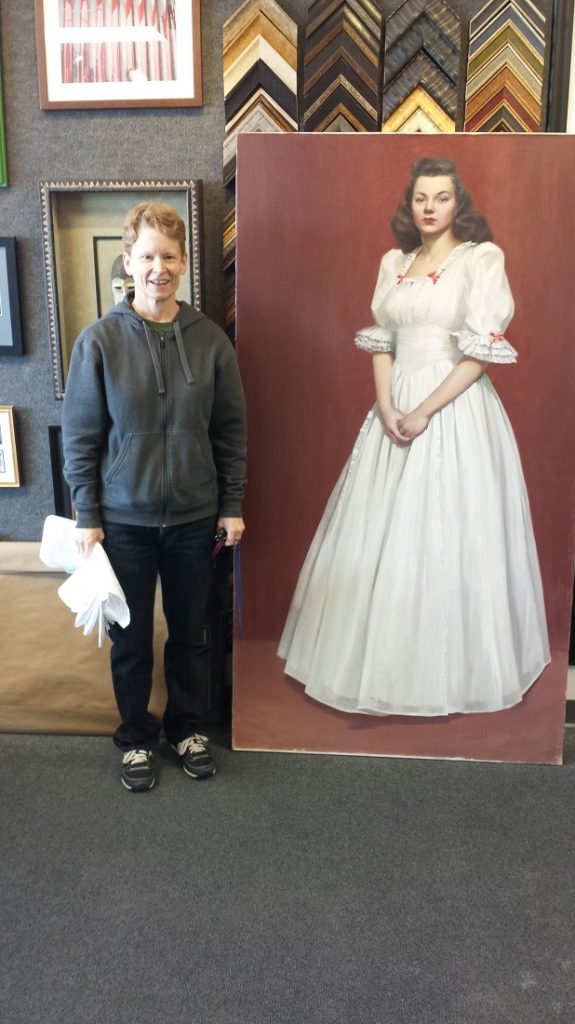
Assistant Conservator Roberta Woodrick
with the portrait. Click image to enlarge.
The portrait of Shirley Tholen is now hanging again in the North Gallery, awaiting new signage that explains who she was and why we have this painting. She will no doubt draw attention as visitors begin to appear in our recently renovated Gallery, and her story helps to tell the history of the University in a different way than the rest of our new permanent exhibits.
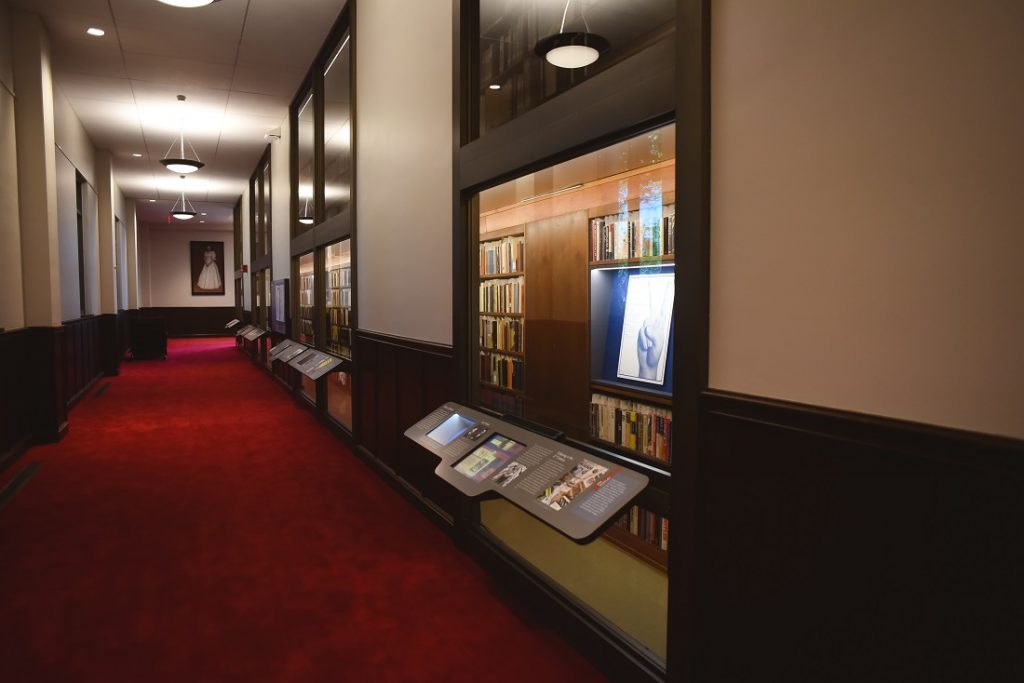
The portrait of Shirley Tholen in the recently-renovated North Gallery.
Click image to enlarge.
This was truly a team effort. Whitney Baker and Roberta Woodrick of Conservation Services, Becky Schulte and Letha Johnson from University Archives, and staff from across KU Libraries researched, planned, and made the work happen. But it would not have happened without the support of the Jaspers as well. Not everyone can be responsible for helping conserve a historic portrait of their mother, but they can assist us to do extraordinary things that would not otherwise be possible with our limited resources.
Please come visit the North Gallery and see Shirley soon.
Beth M. Whittaker
Assistant Dean for Distinctive Collections
Director of Spencer Research Library
